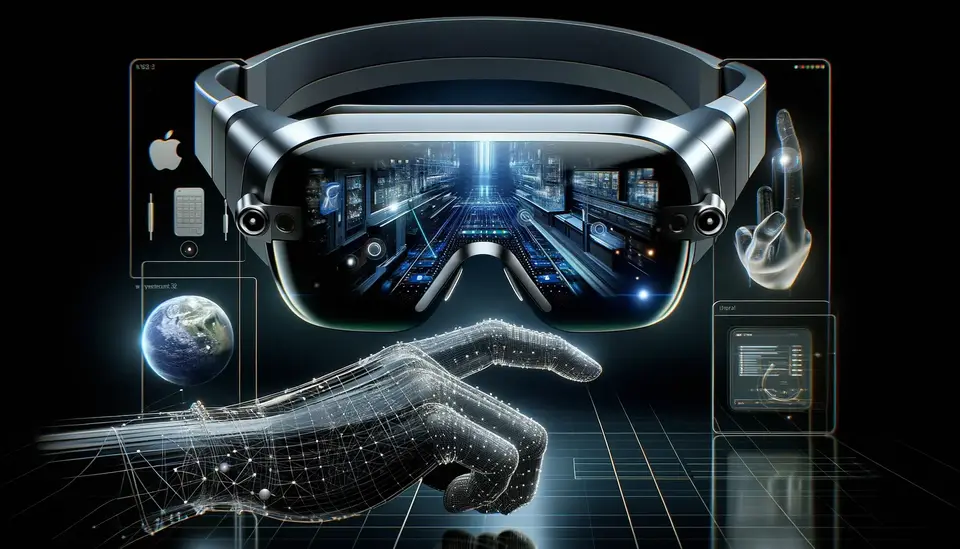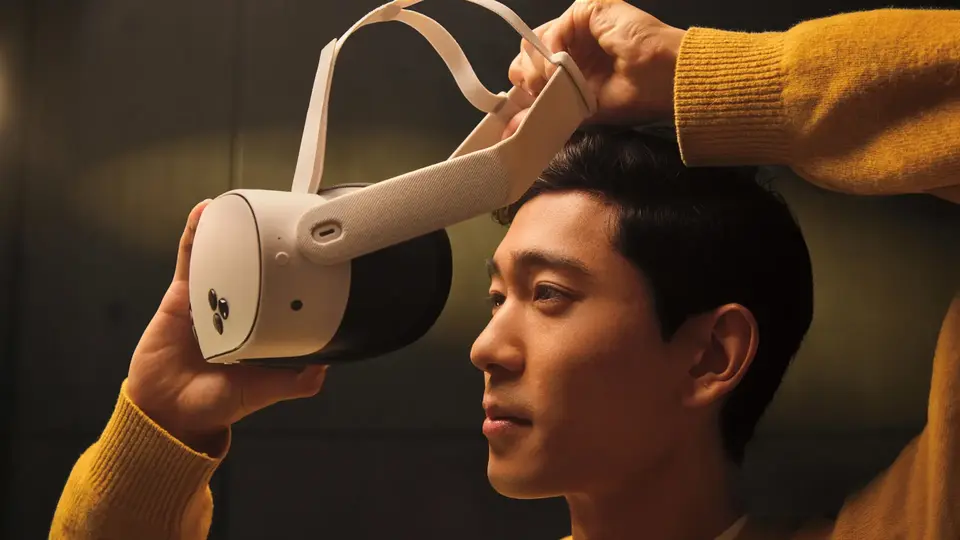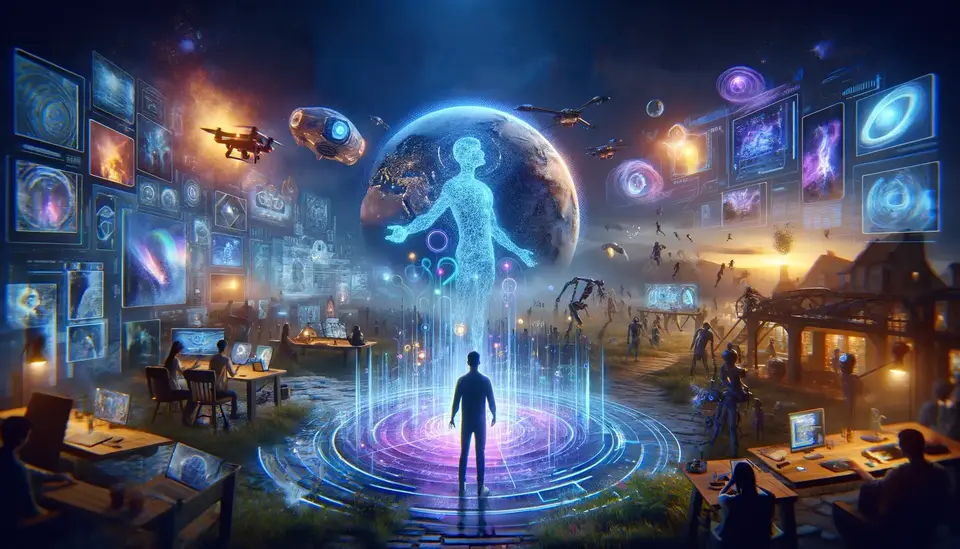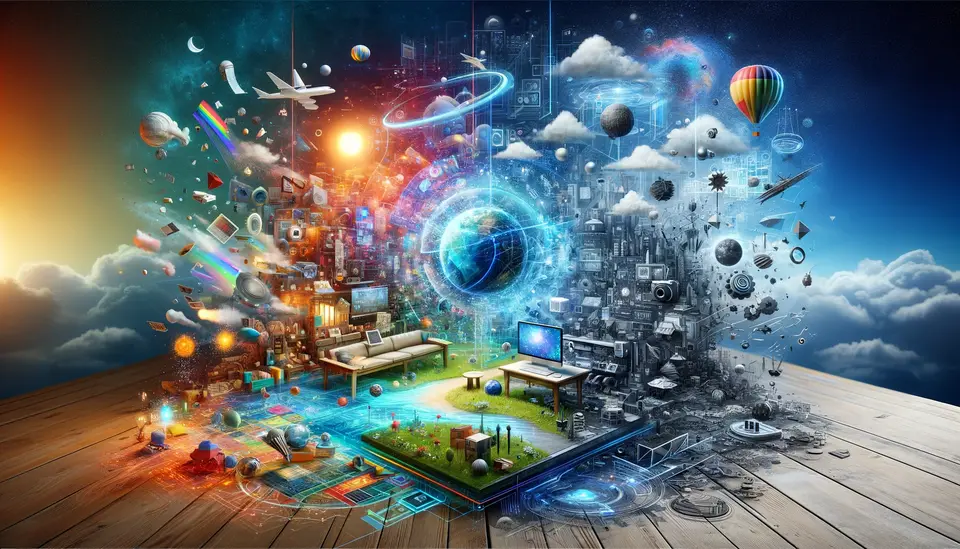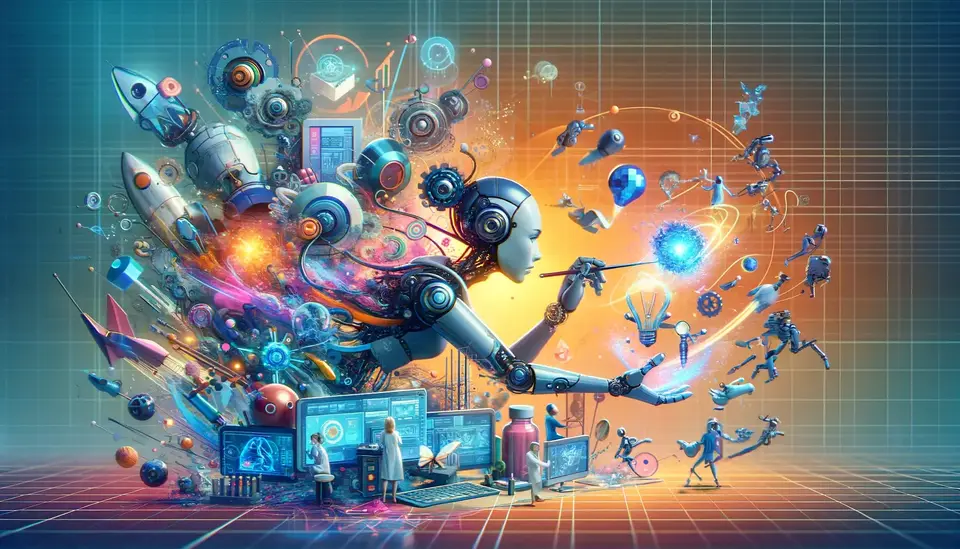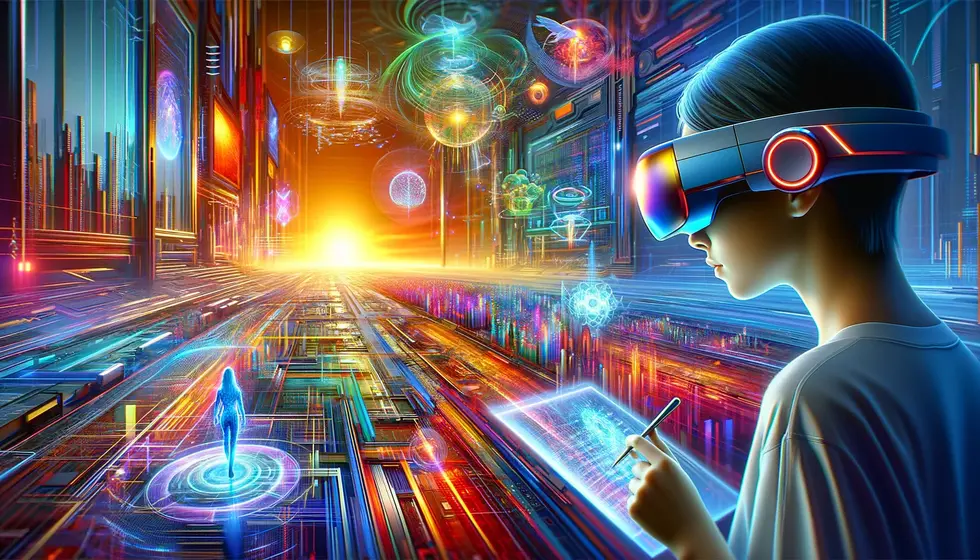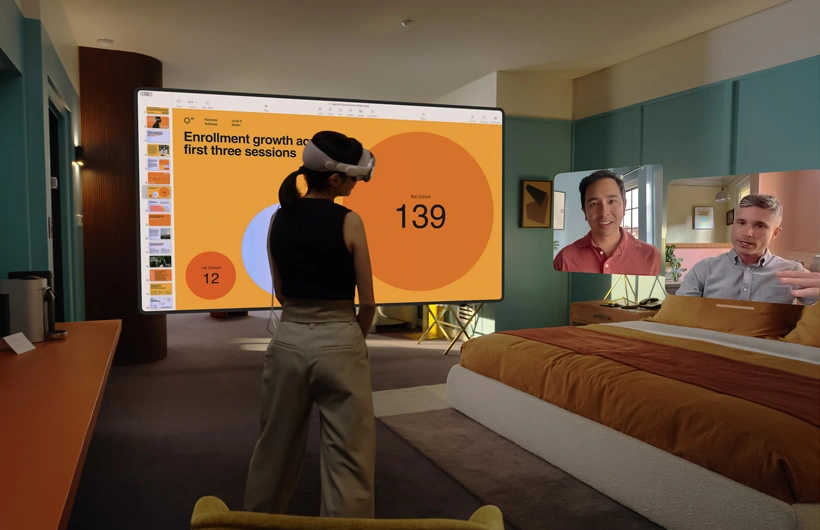The Revolutionary Impact of Artificial Intelligence (AI) on Mixed Reality (MR)
Posted on February 6, 2024 9 minutes 1729 words
Table of contents
Introduction
In the evolving landscape of digital technology, Mixed Reality (MR) emerges as a groundbreaking domain, blurring the lines between the physical and virtual worlds. When intertwined with the prowess of Artificial Intelligence (AI), MR transcends conventional boundaries, offering experiences that are not only immersive but also intuitively responsive. This fusion is creating a paradigm shift in how we interact with technology, making digital interactions more natural and life-like.
This blog post aims to unveil the influential role of AI in revolutionizing MR. We will explore how AI’s integration is enhancing MR applications across various sectors, from healthcare and education to entertainment, and speculate on its potential future advancements. As we navigate through these discussions, we’ll gain insights into the synergistic relationship between AI and MR, and how it’s set to redefine our interaction with the digital world.
AI and MR: A Synergistic Evolution
The convergence of Artificial Intelligence (AI) with Mixed Reality (MR) represents a synergistic evolution, where each technology amplifies the strengths of the other. This integration is paving the way for more intuitive, interactive, and immersive digital experiences.
- Enhanced Realism: AI algorithms are pivotal in rendering MR environments that are incredibly realistic and responsive. They analyze and interpret user interactions, adapting the virtual elements in real-time to align seamlessly with the physical world.
- Contextual Awareness: AI in MR goes beyond visual enhancements, offering contextual awareness. This means MR devices can understand and react to the user’s environment, providing relevant information and augmentations that enhance the user’s interaction with their surroundings.
- Personalized Experiences: AI’s learning capabilities enable MR systems to tailor experiences to individual users. Over time, these systems learn from user behaviors, preferences, and patterns, offering a highly personalized and dynamic MR experience.
Key Benefits:
- Immersive and realistic integration of virtual and physical elements.
- Context-aware and responsive interactions, improving user engagement.
- Personalized experiences, adapting to individual user needs and preferences.
By combining AI with MR, we’re not just witnessing an enhancement of existing technologies; we’re seeing the creation of a new realm of possibilities, where digital and physical realities coexist and interact in more meaningful ways.
Transforming Industries through AI-Enhanced MR
The integration of Artificial Intelligence (AI) with Mixed Reality (MR) is revolutionizing various industries, offering innovative solutions and enhancing operational efficiencies. Here’s a look at how AI-enhanced MR is making significant strides in several key sectors:
Healthcare
- Remote Surgeries: AI-enhanced MR is revolutionizing surgical procedures. Surgeons can use MR headsets to overlay critical information, such as 3D images of a patient’s anatomy, directly into their field of vision during surgeries, even from remote locations.
- Medical Training: Interactive MR simulations, powered by AI, provide medical students with realistic training scenarios. This technology allows for safe practice of procedures and helps in better understanding complex medical concepts.
Education
- Immersive Learning: In education, AI-driven MR creates engaging, immersive learning environments. Students can interact with 3D models and simulations, bringing abstract concepts to life and enhancing understanding and retention.
- Tailored Educational Content: AI algorithms personalize learning experiences, adapting content to suit individual learning styles and progress, making education more effective and interactive.
Entertainment
- Enhanced Gaming: The gaming industry is leveraging AI in MR to create deeply immersive and interactive experiences. AI-driven MR games adapt in real-time to players’ actions, offering a more dynamic and engaging gaming experience.
- Interactive Media: AI-enhanced MR is also transforming other forms of entertainment, offering interactive and immersive experiences in movies, theme parks, and virtual tours.
Key Impacts
- Improved precision and safety in medical procedures.
- Enhanced educational outcomes through interactive and personalized learning.
- Innovative and engaging entertainment experiences.
These examples illustrate the transformative impact of AI-enhanced MR across different industries, showcasing its potential to improve practices, enhance experiences, and open up new possibilities for innovation.
Recent Advances in AI for MR
The field of Mixed Reality (MR) is continuously evolving, driven by recent advancements in Artificial Intelligence (AI). These technological leaps are not only enhancing the capabilities of MR but are also expanding the horizons of its applications.
- Advanced Machine Learning Algorithms: The development of more sophisticated machine learning models has allowed MR systems to understand and interpret complex environments and interactions with greater accuracy. These algorithms enable MR devices to provide more relevant and contextually appropriate responses, enhancing user experiences.
- Real-Time Data Processing: The ability to process vast amounts of data in real-time is crucial for the seamless integration of AI in MR. Advancements in this area have led to quicker, more efficient, and more responsive MR systems, which are essential for applications requiring immediate feedback, such as in surgical procedures or high-paced gaming.
- Improved Sensory Recognition: AI has significantly advanced in terms of sensory recognition — including visual, auditory, and haptic feedback. This progression allows MR systems to offer more immersive and realistic experiences by accurately mimicking the nuances of the real world.
- Predictive Analytics and Personalization: AI’s predictive analytics are being used to anticipate user needs and preferences in MR environments. This leads to highly personalized experiences, where MR content adapts to individual users over time, based on their interactions and behaviors.
These advancements are pushing the boundaries of what’s possible in MR, making it not only more immersive and interactive but also more adaptable and personalized. As AI technology continues to advance, we can expect MR to become even more integrated into various aspects of our lives and work.
Challenges and Ethical Considerations
The integration of Artificial Intelligence (AI) in Mixed Reality (MR) brings a host of challenges and ethical considerations that must be thoughtfully addressed to ensure responsible and beneficial development and use of these technologies.
- Technical Challenges: Achieving seamless integration between AI and MR technologies presents significant technical hurdles. Issues like latency, accuracy of AI interpretations, and hardware limitations can impact the effectiveness and reliability of MR experiences.
- Data Privacy and Security: With AI in MR relying heavily on data, including personal and sensitive information, there are substantial concerns about data privacy and security. Ensuring the protection and ethical use of this data is paramount.
- User Safety and Comfort: MR environments, especially those enhanced by AI, can be intensely immersive. This raises concerns about user safety and comfort, including the risk of disorientation, motion sickness, and overstimulation. Ensuring these experiences do not negatively impact physical and mental health is crucial.
- Ethical Use of Immersive Technology: There are broader ethical issues regarding the use of highly immersive AI-driven MR, such as the potential for creating overly addictive experiences, manipulating user perceptions and behaviors, and blurring the lines between reality and virtuality.
- Accessibility and Inclusivity: Ensuring that AI-enhanced MR technologies are accessible and inclusive is also a challenge. There is a risk of widening the digital divide if these advanced technologies are only available to a select few.
Navigating these challenges requires a multi-faceted approach involving ongoing research, collaboration among technologists, ethicists, and policymakers, and the development of robust ethical guidelines and best practices. The goal is to harness the benefits of AI in MR while mitigating risks and ensuring ethical, equitable, and responsible use.
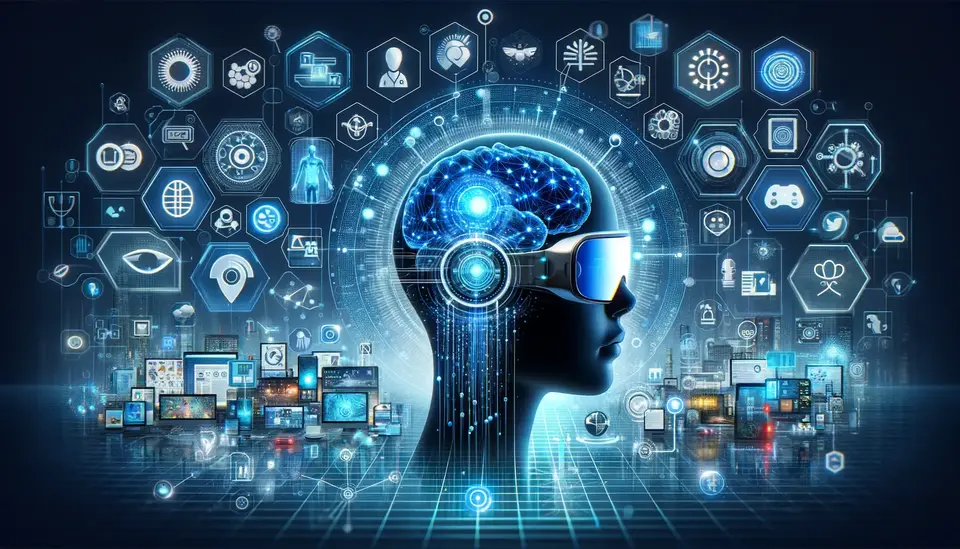
The Future of AI in MR
As we look towards the future, the interplay between Artificial Intelligence (AI) and Mixed Reality (MR) is poised to unlock even more innovative and transformative possibilities, reshaping how we interact with the world around us.
- Deepening Integration and Sophistication: Future developments in AI are expected to further deepen its integration with MR, leading to even more sophisticated and seamless experiences. This could include more intuitive and natural user interfaces, advanced object recognition, and real-time environmental adaptation.
- Expanding Industry Applications: The scope of AI-enhanced MR is set to broaden, impacting industries beyond those currently most affected. Potential areas include advanced manufacturing and logistics, where MR can assist in complex assembly processes or inventory management, and urban planning, where it can visualize and simulate changes in real environments.
- Revolutionizing Human-Computer Interaction: The future of AI in MR holds the potential to revolutionize the way we interact with computers. Moving beyond screens and keyboards, we might see interactions that are more based on gestures, voice, and even thoughts, creating a more natural and immersive computing experience.
- Ethical and Responsible Innovation: As AI and MR technologies advance, so too will the emphasis on ethical and responsible innovation. This includes addressing privacy concerns, ensuring user safety, and promoting equitable access to these technologies.
- Blurring Boundaries Between Physical and Digital Realms: In the future, AI-enhanced MR could blur the boundaries between the physical and digital worlds to an unprecedented degree. This will not only change the way we perceive and interact with our environment but could also lead to new forms of social interaction, entertainment, and personal productivity.
The future of AI in MR is a landscape brimming with potential. As these technologies continue to evolve and intertwine, they promise to redefine our reality, enhance our capabilities, and open new avenues for exploration and innovation.
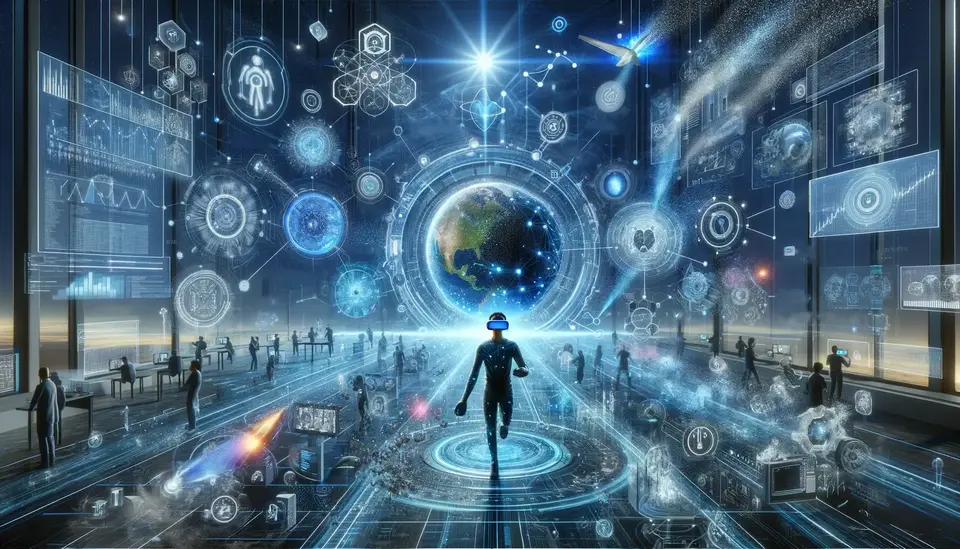
Conclusion and Key Takeaways
In delving into the realm of “Artificial Intelligence in Mixed Reality,” we have journeyed through a landscape where the fusion of AI and MR is not just transforming technology but reshaping our very experiences and interactions with the world. This integration marks a significant leap forward in the evolution of immersive technologies.
- Synergy of AI and MR: The combination of AI with MR brings about a new level of interactivity and immersion, making digital experiences more intuitive, personalized, and contextually relevant.
- Impact Across Industries: From healthcare to education, and from entertainment to manufacturing, the influence of AI-enhanced MR is widespread, offering innovative solutions and improving practices in various sectors.
- Technological Advancements: The continuous advancements in AI, including machine learning algorithms, real-time data processing, and sensory recognition, are pushing the boundaries of MR, making it more adaptable and immersive.
- Navigating Challenges: The path forward involves addressing the technical, ethical, and accessibility challenges associated with these technologies, ensuring responsible and beneficial advancement.
- A Future of Possibilities: The future of AI in MR holds immense promise, potentially revolutionizing how we interact with technology and blurring the lines between the physical and digital realms in ways we have yet to fully imagine.
As we conclude, it’s evident that the fusion of AI and MR is not merely a technological trend but a pivotal shift in our digital landscape, one that represents a future rich with possibilities. It invites us to engage, explore, and be a part of its continuous evolution.

